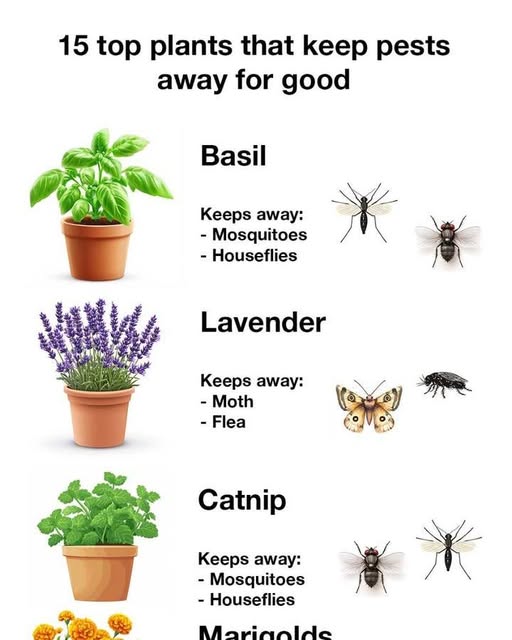6. Peppermint: Repelling Ants and Spiders
Peppermint is a refreshing herb that is effective at repelling ants and spiders. Its strong menthol scent confuses these pests and deters them from entering homes. Planting peppermint around the perimeter of your home or using peppermint oil sprays can help keep these unwanted visitors at bay.
7. Chrysanthemums: Natural Insecticide for Roaches and Fleas
Chrysanthemums contain pyrethrum, a natural insecticide that is effective against roaches, fleas, and other insects. The flowers can be used to make natural insecticidal sprays. Planting chrysanthemums in your garden can help reduce the population of these pests.
8. Lemongrass: Mosquito Repellent with a Citrus Scent
Lemongrass is a tropical plant known for its citrus scent, which is highly effective at repelling mosquitoes. The plant contains citronella, a common ingredient in mosquito repellents. Planting lemongrass in your garden or using its essential oil can help keep mosquitoes at bay.
9. Sage: Keeping Away Cabbage Moths and Carrot Flies
Sage is an aromatic herb that can deter cabbage moths and carrot flies. Its strong scent confuses these pests, making it difficult for them to locate their host plants. Sage can be planted alongside vegetables to protect them from these common garden pests.
10. Petunias: Defense Against Aphids and Tomato Hornworms
Petunias are not only beautiful but also serve as a natural defense against aphids, tomato hornworms, and other pests. They release a chemical that repels these insects, making them an excellent companion plant for vegetable gardens.
11. Garlic: A Shield Against Mosquitoes and Beetles
Garlic is a potent pest repellent due to its strong odor, which deters mosquitoes, beetles, and other insects. Planting garlic in your garden can create a natural barrier against these pests. Additionally, garlic can be used to make homemade insecticidal sprays.
12. Citronella: The Classic Mosquito Repellent
Citronella is widely known for its mosquito-repelling properties. The plant’s oil is a common ingredient in candles and sprays designed to keep mosquitoes away. Planting citronella in your garden or using its oil can help create a mosquito-free zone.
13. Mint: Versatile Protection from Ants and Mosquitoes
Mint is a versatile herb that effectively repels ants, mosquitoes, and other pests. Its strong scent confuses insects, making it difficult for them to locate food sources. Mint can be planted in pots or garden beds to provide a natural pest barrier.
14. Nasturtiums: A Trap Crop for Aphids and Whiteflies
Nasturtiums are often used as a trap crop to attract aphids and whiteflies away from other plants. These pests are drawn to nasturtiums, allowing gardeners to protect their more valuable crops. Nasturtiums can be planted around the perimeter of gardens to lure pests away.
15. Eucalyptus: Repelling Mosquitoes and Flies
Eucalyptus is a fast-growing tree known for its ability to repel mosquitoes and flies. The tree’s oil is often used in commercial insect repellents. Planting eucalyptus in your garden can help create a natural barrier against these pests.
Conclusion: Integrating Pest-Repelling Plants into Your Garden
Incorporating pest-repelling plants into your garden is an effective and environmentally friendly way to manage pests. By strategically planting these species, you can reduce the need for chemical pesticides and create a more balanced ecosystem. Whether you’re looking to protect your vegetable garden or simply enjoy a pest-free outdoor space, these plants offer a natural solution to common pest problems.

